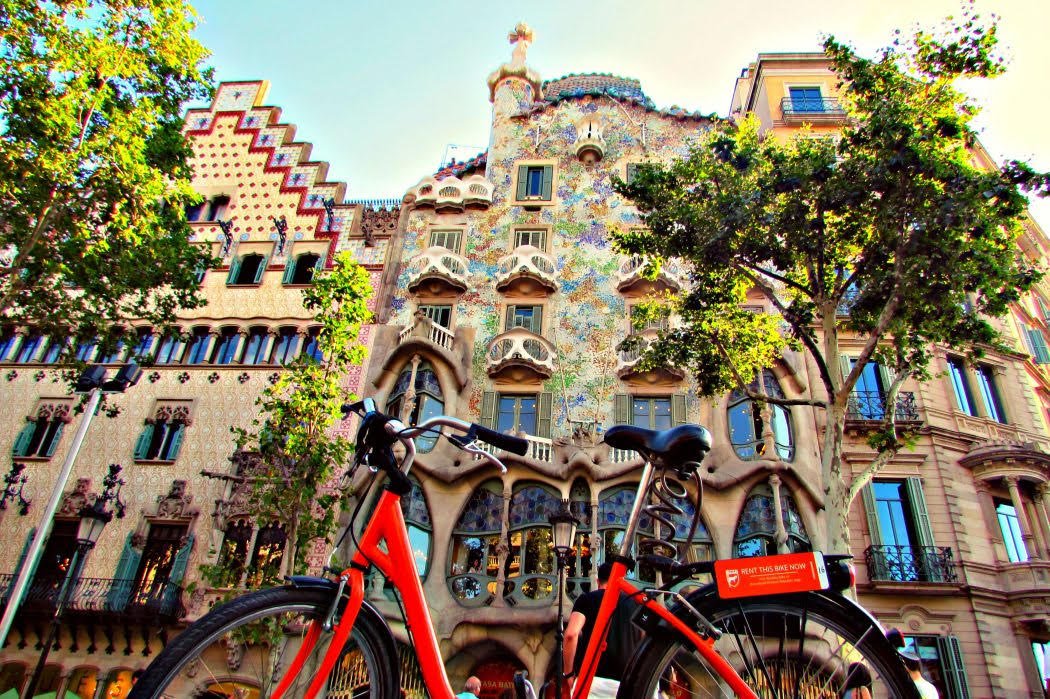Leading by Example- Barcelona’s Plan for Climate Change
Photo by Driftwood Journals
Despite recent news from the Intergovernmental Panel on Climate Change regarding the course we are on if we do not reduce CO₂ emissions, we can look towards certain examples of inspiration for how we can mitigate climate change and live sustainable lives that will change our course for the better.
This week, we’ll take a look at Barcelona and the plans that the city council has put in place to reduce negative impacts on the environment. The city has identified particular impacts that climate change will have on the city. The main issues of focus are resident’s health and quality of life, as well as environmental issues involving rising temperatures and increased flooding.
For instance, in the last 34 years, Barcelona has had eight heat waves. Increasing temperatures have caused concern about the health of residents, especially in more concentrated neighborhoods. The city’s eight beaches are also at risk from severe storms which will result in increased flooding and morphological changes. Deterioration of the city’s beaches are not only an environmental concern, but a problem for the city’s tourism initiatives, as Barcelona’s beaches are a main tourist attraction.
The city council has conducted studies in recent years to determine how climate change will have an effect on a local level in the future. Studies revealed the consequences of a ‘committed’ scenario in which greenhouse gas emissions are reduced on a global scale, and a ‘passive’ scenario in which little to no measures are put in place. If measures are upheld on a global scale, the average temperature in Barcelona would increase by 1.7°C by the end of the century. However, if global targets are not met, temperatures would increase by 3°C.
The city council has already adopted measures in line with the COP21 Paris Climate Change agreements and is doing what they can to not exceed temperatures of more than 1.5°C. This includes a 40% reduction of greenhouse gases compared to 2005 and increasing urban green infrastructures around the city. Recently, the city produced the ‘Climate Plan 2018- 2030,’ which builds on current plans and strategies that have already been implemented. New initiatives include €1.2 million in subsidies for local organisations or projects that promote the reduction of greenhouse gas emissions and align with the city’s goals. The plan demonstrates that more can always be done to reduce emissions, a fact that we should always keep in mind while we work towards a more sustainable society.
Businesses, including Barcelona Energia, are also adopting new measures to reduce emissions. The metropolitan electricity distributor aims to lead the transition to local green energy by encouraging responsible energy consumption. As of July 2018, the company began supplying 100% local green energy to municipal bodies and companies, which will contribute to saving the city 700,000 euros. Local distribution also cuts the greenhouse gas emissions produced by transporting the energy consumed and reduces energy loss during the same transportation process.
Local residents and tourists can also make use of the city council’s website which outlines how to live a more sustainable life. Everyone can use the site to determine how to dispose of certain waste and recycle other materials. The site also explains how recycled material will be used. For example, aluminium cans will be turned into bicycles or screws. Residents can also determine the air quality of their surroundings using information from network of air pollution monitoring stations. The site also promotes getting around the city by bike; highlighting present and future bicycle lanes. Together with local initiatives, the city council provides the necessary information for everyone in Barcelona to help mitigate climate change.
Barcelona is a great example of how we can all contribute to mitigate the negative impacts of climate change on the environment. The city of Barcelona has outlined measures that are not only being adopted by the government, but by businesses and individuals as well. By providing clear actions that everyone can follow, the city of Barcelona is allowing every individual to take part in the responsibility to reduce the negative impacts on the environment. If we continue to look towards examples such as Barcelona for inspiration, whether as consumers, business owners, or government officials, we can all contribute to making a difference and hopefully avoid the potential risks of further deterioration of our environment and our quality of life.
References
‘Rising temperatures.’ http://lameva.barcelona.cat/barcelona-pel-clima/en/how-will-climate-change-affect-barcelona/rising-temperatures
‘How will climate change affect Barcelona?’ http://lameva.barcelona.cat/barcelona-pel-clima/en/climate-change/how-will-climate-change-affect-barcelona
‘Shrinking city beaches, due to the rise in sea level.’ [accessed 4 September 2018] http://lameva.barcelona.cat/barcelona-pel-clima/en/how-will-climate-change-affect-barcelona/shrinking-city-beaches-due-rise-sea-level
‘Barcelona energia flicks the switch.’ http://lameva.barcelona.cat/barcelona-pel-clima/en/noticia/barcelona-energia-flicks-the-switch_683855
‘Environment and sustainability.’ https://www.barcelona.cat/en/living-in-bcn/environment-and-sustainability
http://urbanresiliencehub.org/article/barcelona-plan-clima/

